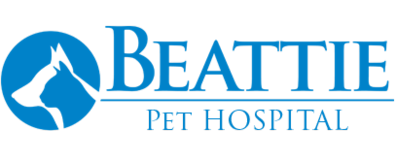Post-Surgical Recovery
Surgery

Your pet has just come home from surgery . . . what now? How necessary is that “cone of shame?” This blog post hopes to clarify some post-surgical concerns that pet parents often raise during the post-surgical healing period. Please note: this post contains graphic images of open incisions and infected surgical sites, which are potential consequences of poor surgical site maintenance.
What should I expect now that I have my pet home?
During the first 24 hours of recovery, your pet will likely be tired and may have a decreased appetite. Some pets have not have their usual bowel movement in the evening due to fasting prior to anesthesia. Please notify your veterinarian if your pet does not have a bowel movement after 24 hours, is vomiting, experiencing diarrhea, is painful despite pain medication, or continues to have a reduced appetite. Your veterinarian may need to reassess your pet, prescribe additional treatments or medications to help your pet have a smooth recovery.
Does my pet need to wear an Elizabethan collar (E-collar)? He doesn’t like it! How will she eat or sleep?
A happy dog modelling a well-fitted E-collar!
An Elizabethan collar, or E-collar, is necessary for most pets recovering from surgery. Depending on where the healing incisions are, an E-collar prevents your pet from licking or scratching at those incisions, potentially removing sutures, opening incisions and introducing infection to the site. This is especially important for abdominal surgeries such as routine spay surgeries; if this site is opened, infection can be seeded deep into the abdomen, possibly requiring an additional surgery to repair the wound and antibiotics to fight off infection in the abdomen.
Your pet’s E-collar is sized appropriately by your veterinary team to ensure that your pet cannot reach their incision when the cone is used correctly. Most pets adapt very well to their E-collars. To help your pet eat while wearing the collar, you can temporarily use smaller bowls that will fit beneath the cone. Otherwise, with the allure of a tasty meal most pets seem to make it work! Cutting the E-collar to a shorter length allows the pet to access their surgical incision. If you are concerned that your pet is uncomfortable with their E-collar, speak to your veterinarian prior to attempting alternatives to an E-collar.
Are there alternatives to E-collars?
While alternatives exist to the traditional plastic E-collar, they are often inappropriate for most patients. Inflatable or soft fabric collars can be maneuvered by your pet to allow them to access their surgical sites. Some pets can simply pop their inflatable collars off entirely. As a result, veterinarians generally do not regularly recommend these collars for post-surgical recovery as they do not protect the integrity of surgical incisions. Sometimes, veterinary staff may recommend a “onesie” or t-shirt as a suitable alternative for some pets based on the location of the incision and the energy level of the pet, or if an E-collar would otherwise sit directly on an incision (for example, a lump removed from the neck may have a large incision in the area that an E-collar would normally sit). Your veterinarian will be able to assess whether an alternative to a traditional E-collar is appropriate for your pet.
What should I be looking for in a surgical site that is healing well?
A healing surgical site will appear pink, without redness, noticeable swelling, odour or discharge. There may be some scabbing at the site. Some incisions will be closed with visible external sutures or staples while others are closed internally using sutures just under the skin. External sutures and skin staples require removal by veterinary teams, often 10 to 14 days after the surgery date.
Is there anything I can do to help my pet recover smoothly?
Yes! Following the instructions of your veterinarian by administering pain medication, keeping preventative devices like E-collars in place and monitoring your pet’s activity level, eating and water intake can all be beneficial in terms of helping your pet recover well. Keeping your pets calm and quiet and preventing rough-housing with other animals will help keep surgical sites intact. Cats should not be allowed to jump up on high surfaces which creates tension on healing incisions and dogs should only be walked outdoors on a leash to use the bathroom. While your dog may be adjusting to the cone or your cat may seem bored in their room without furniture to jump on, remember: a little discomfort for 10 to 14 days, which is the typical recovery period, goes a long way! Allowing your pet to return to normal activity or access their surgical site delays healing and can lead to a second surgery to fix damage done to their surgical site.
